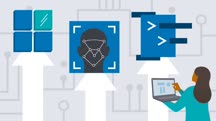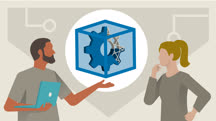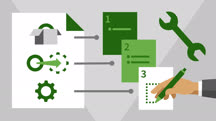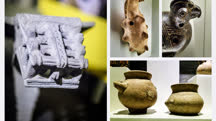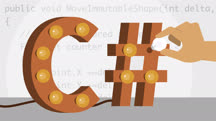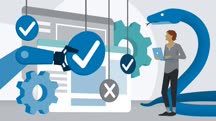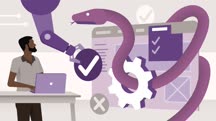Course catalog
Categories
Showing 7,861-7,880 of 8,871 items.
Tech Soft Skills: Interviewing Developers
Looking to add a new developer to your team? Learn how to prepare for and conduct interviews to accurately assess a candidate's technical aptitude and overall fit.
Tech Soft Skills: Moving from Developer to Engineering Manager
Learn about the skills you need to successfully transition from an individual contributor developer on a team to an engineering manager.
Tech Trends (218005)
Get a rundown of the latest tech trends from our very own LinkedIn staff instructors. Whether you're a software engineer wondering if a new feature or update is worth your time—or a technology manager determining which services or products to adopt—this course offers the information you need to quickly assess emerging trends.
Each video works as a stand-alone explainer, so you can watch the course in order or cherry-pick your favorites. Get insights on hot topics like facial recognition, Android apps on Windows 11, and much more. And as exciting new technologies emerge, we’ll add new videos to this course to keep you on the cutting edge.
Each video works as a stand-alone explainer, so you can watch the course in order or cherry-pick your favorites. Get insights on hot topics like facial recognition, Android apps on Windows 11, and much more. And as exciting new technologies emerge, we’ll add new videos to this course to keep you on the cutting edge.
Technical Recruiting
Technical recruiters focus on finding top technical talent to meet the ever-growing demand by employers worldwide. Find out what it takes to succeed in this recruiting profession.
Technical Sales: The Role of the Sales Engineer
Learn about the role of sales engineer and the essentials of technical sales—an exciting new career for anyone with technical know-how and the people skills to close a deal.
Technical SEO (209913)
Even if the only thing you know about SEO is what the letters S, E, and O stand for, you probably know that good content on your website only goes so far when it comes to improving visibility. In order to maximize ROI and increase leads to your business, you need technical search engine optimization. In this course, Dana DiTomaso shows how to optimize your website for SEO by looking at how crawlers work, strategies for increasing site speed, using schema, architecture, URLs, and image/video to your SEO advantage. In addition to the actual nuts and bolts of SEO, Dana also covers the importance of making concrete recommendations to web developers, so you can actually get the fixes implemented.
Technical WordPress SEO
Optimize from the inside out. Learn technical SEO techniques to enhance the discoverability, structure, and performance of your WordPress website and improve your search ranking.
Technical Writing: Quick Start Guides
Learn a step-by-step process for writing a quickstart guide to accompany a product or software.
Technology and Data Careers in Government
Today, some of the most exciting and in-demand IT jobs are working for cities. Find out how to prepare for an IT career in city government.
Technology and Design Ethics (205561)
Many of the technology courses in our library focus on how to make things. But sometimes, designers and developers need to pause, look around, and evaluate how the things they make affect the people who'll end up using them. "What's best for our users?" can be a difficult question when mixed with other organizational priorities. In this course, Morten Rand-Hendriksen provides concrete approaches for evaluating and acting on the ethical questions technologists encounter constantly. He provides a framework for ethics in tech, discusses matters related to privacy and security, explains how to discover and define virtues, and more.
Technology for Product Managers
Learn the key technology terms and trends that will affect your work as a product manager, and your ability to communicate with engineers, UX designers, and others on your team.
Telling a Story to Build a Community (224907)
Do you need to build a following or grow your community? No matter how many facts you rally in support of a cause, they will never hold the same weight as a well-told story. In this course, Michael Kass, founder of StoryImpact, explains how to identify and craft your story in order to create change in the world. Learn about the different types of stories that can be told and the key ingredients of a successful story. Discover how to structure your elements into a story that engages your audiences and rallies them around your call to action, whether that’s to donate, volunteer, or simply spread the word. Finally, discover different ways to deploy your story, both online and in person.
This course was created by CreatorUp. We are pleased to host this content in our library.
This course was created by CreatorUp. We are pleased to host this content in our library.
Telling a Story with Adobe Spark
Learn how to tell your story with Adobe Spark. Create elegant graphics, videos, and webpages with this free graphic design toolset.
Telling Your Story on the Web in 60 Seconds (222731)
Grabbing people's attention on the internet is getting harder and harder. Simple text and static photos just don't cut it in such a cluttered space. In this course, you learn how to use video, motion graphics, and 360-degree imagery to create eye-catching content. Rich Harrington takes you through a dozen step-by-step projects that feature dynamic media—from the deceptively simple slideshow to meme-worthy animated GIFs to attention-grabbing videos for TikTok—and require nothing more than a camera or smartphone and a subscription to Adobe CC and a few downloadable apps. Each project can be exported in a format that's easy to share online and on social media. By the end of the course, you'll have several options for building your next web project, whether it's to demo a product, draw attention to a cause, or promote a brand online.
Telling Your Story on the Web in 60 Seconds
Learn how to use video, motion graphics, and 360-degree imagery to create eye-catching content for the web and social media—from animated GIFs to whiteboard videos.
Ten Tips for the C# Developer
Discover tips for improving your workflows in C# development. Even experienced programmers might have missed these hidden or interesting methods that help you write better code.
Test Automation Foundations
Get started in test automation. Learn how to integrate automated testing into your QA or DevOps workflow.
Test Automation with Python: 1 Introduction to Automated Testing (220402)
The Test Automation with Python series from Headspin University is designed to teach automation skills and tools for testing applications in Appium and Selenium, the world's most popular UI automation tools. But before getting into the automation itself, this first course delves into the concept of testing, from the etymology of the word, to how to design useful tests for your software. While using software as it is meant to be run seems like an obvious test, it’s also helpful and necessary to imagine conditions for the software that its developers might not have thought about. The history of automation is also covered, highlighting the fact that most software is in fact a form of automation. After this course, you’ll have a solid foundation of automated testing and be ready to move on to the next course in the series.
Note: This course was created by HeadSpin University. We are pleased to host this training in our library.
Note: This course was created by HeadSpin University. We are pleased to host this training in our library.
Test Automation with Python: 10 Additional Appium Modes and Features (226369)
This installment of the Test Automation with Python takes a look at scaling your test suite so that you can run multiple tests at a time. Eventually your test suite will grow large enough that waiting for tests to complete one by one just doesn’t make sense. This course covers the complications that come with running multiple tests in parallel and details what you need to successfully run your test suite. And while running your tests in an isolated environment is an important part of the process, this course demonstrates the importance of testing them out in a continuous integration environment as well. The course finishes with techniques for debugging your tests, along with best practices for speed, reliability, and maintainability in your test suite.
Note: This course was created by HeadSpin University. We are pleased to host this training in our library.
Note: This course was created by HeadSpin University. We are pleased to host this training in our library.
Test Automation with Python: 2 Python for Testers (220419)
This second course in the Test Automation with Python series focuses on writing code to automate software testing. As opposed to no-code tests where you record your actions in an app for later playback, writing code for automation gives you more flexibility in many cases, such as when a small change to the app causes the testing process to change. This course also explains the choice of Python as the programming language. While Java is probably the most popular language used with Selenium and Appium, it can lead to unnecessary complexity and confusion unless you know it well. Python, meanwhile, is powerful, simple, and expressive, and in some ways is more flexible in terms of executing UI test automation. This course walks you through the entire process, from installing Python, to writing your first script, all the way through completion, testing, and troubleshooting your code.
Note: This course was created by HeadSpin University. We are pleased to host this training in our library.
Note: This course was created by HeadSpin University. We are pleased to host this training in our library.


